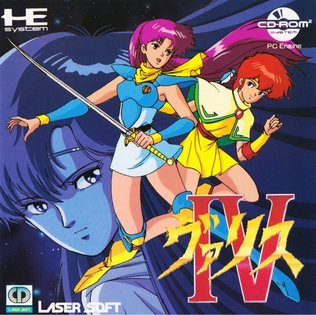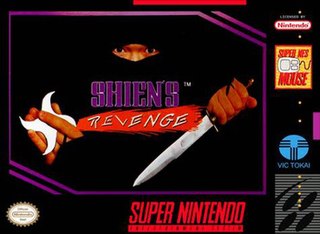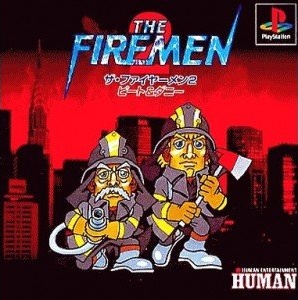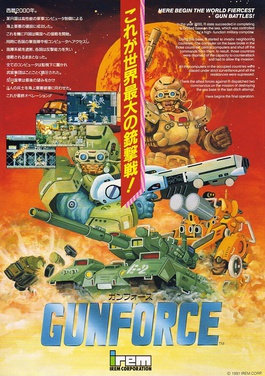
Terranigma is a 1995 action role-playing game developed by Quintet for the Super Nintendo Entertainment System (SNES), with manga artist Kamui Fujiwara acting as the character designer. The game tells the story of the Earth's resurrection by the hands of a boy named Ark, and its progress from the evolution of life to the present day. The game is considered the third and final entry in an unofficial trilogy of action RPGs created by Quintet, also including Soul Blazer (1992) and Illusion of Gaia (1993).

Primal Rage is a fighting game developed and released by Atari Games to arcades in August 1994. The game takes place on a post-apocalyptic version of Earth called "Urth". Players control one of seven large beasts that battle each other to determine the planet's fate. Matches feature many of the conventions of fighting games from the era including special moves and gory finishing maneuvers. Ports were released for home consoles and personal computers. Efforts to perfectly emulate the arcade original have been unsuccessful due to the use of an unusual copy protection method. Toys, comics, a novel and other merchandise tie-ins were produced. The game sold more than 1.5 million copies.

HyperZone is a rail shooter video game developed and published by HAL Laboratory for the Super Nintendo Entertainment System (SNES). It used the SNES' Mode 7 capability.

Alien vs Predator is a 1993 beat 'em up video game for Super Nintendo Entertainment System, developed by Jorudan and published by Information Global Service in Japan and by Activision internationally. An arcade game of the same title was released by Capcom eight months later, but the two games are different and their storylines are unrelated to each other.

Super Bomberman is an action, maze game, part of the Bomberman series, released for the Super NES in 1993. It is the first in the series to be released in Europe keeping the Bomberman title instead of being called Dynablaster or Eric and the Floaters.

Konami Hyper Soccer is a 1992 soccer video game developed and published by Konami in Europe and Mattel in Australia for the Nintendo Entertainment System. Part of the Hyper Sports series, which included Hyper Olympic, its sequel Hyper Sports and Hyper Athlete, it is the second soccer game by Konami following Konami's Soccer on the MSX, and their first soccer game on a Nintendo platform.

BlaZeon is a horizontally scrolling shoot 'em up arcade game released by Atlus in 1992 and was ported to the Super Nintendo Entertainment System in the same year. The game's most distinguishable feature is that players come equipped with a device that allows them to freeze and control certain robots.

Valis IV is a 1991 action-platform video game originally developed by Laser Soft and published by Telenet Japan for the PC Engine CD-ROM². A vastly different version titled Super Valis IV was published in Japan by Telenet in 1992 and in North America by Atlus Software in 1993 for the Super Nintendo Entertainment System. It is the fourth and final main entry in the eponymous series. Following on the events of Valis III, Yuko became a goddess and has watched over Vecanti since Glames' defeat. The dark world prince Galgear, who lost self-control after acquiring a magical ring, broke from his fifteen-year imprisonment by the gods of Vecanti, kidnapping Valna and being pursued by troops led by Cham. Lena, a member of Cham's band, is joined by her sister Amu and the prince's father Asfal on a journey to retrieve the titular sword and defeat Galgear.

Hebereke's Popoon is a two player puzzle video game developed and published by Sunsoft. It is based on the Hebereke series. Hebereke means drunk or untrustworthy. Popoon is an onomatopoeia for the sound made by the game pieces when they explode.

Chew Man Fu is a 1990 action video game developed by Now Production and published in Japan by Hudson Soft and in North America by NEC for the TurboGrafx-16.

The Ignition Factor, known in Japan as Fire Fighting (ファイヤー・ファイティング), is a video game for the Super Nintendo Entertainment System published by Jaleco. The game features firefighters in realistic situations saving civilians in burning buildings, mining incidents, and industrial accidents. It was released on the Wii Virtual Console in Japan on March 1, 2011, in the PAL region on April 29, 2011, and in North America on August 25, 2011, as well as Nintendo Switch Online on December 18, 2020.

Drop Off is a Breakout clone by Data East. The game was published in 1990 for the PC Engine as Drop Rock Hora Hora and subsequently saw a US release for the TurboGrafx-16 as Drop Off.

Isolated Warrior is a 1991 video game developed by KID and published in Japan by Vap, in North America by NTVIC, and Europe by Nintendo. It falls in the shooter genre, although its gameplay also includes elements reminiscent of platforming, while it features isometric projection, similar to Sega's Zaxxon.

Shien's Revenge is a 1994 rail shooter video game developed by Almanic Corporation and originally published by Dynamic Planning for the Super Nintendo Entertainment System in Japan and later in North America by Vic Tokai. In the game, players assume the role of the titular ninja to fight against monsters coming from a time portal in order to face against an entity known as Undertaker and rescue his companion Aska. Co-designed by Takashi Shichijo and mangaka Go Nagai, the title was created by most of the same team that worked on previous projects at Almanic such as E.V.O.: Search for Eden. It was met with mixed reception from critics since its release.

The Firemen 2: Pete & Danny is an action-adventure game developed by Human Entertainment and released for the PlayStation in 1995. It is a sequel to The Firemen.

GunForce is a side-scrolling run and gun game produced by Irem for arcades in 1991. The game was ported by Bits Studios and published by Irem for the Super Nintendo Entertainment System in 1992. The sequel, GunForce II, was originally known in Japan as Geo Storm.

Dirt Racer is a Europe-exclusive video game for the Super Nintendo Entertainment System developed by British studio MotiveTime and released in 1995. This game uses the Super FX powered GSU-1 to provide enhanced graphics.

P-47: The Phantom Fighter is a 1988 horizontally scrolling shooter arcade video game originally developed by NMK and published by Jaleco. Set during World War II, players control a Republic P-47 Thunderbolt fighter aircraft to face against the Nazis, who are occupying multiple countries around the world. Its gameplay involves destroying waves of enemies, picking up power-ups and new weapons, and destroying bosses. It ran on the Mega System 1 hardware.

Super Sidekicks is a 1992 soccer arcade video game developed and published by SNK. It is the first installment in the eponymous series and the second soccer game released for Neo Geo MVS, succeeding Soccer Brawl (1991). Featuring an arcade-style approach to soccer compared to other games released at the time, the title allows players to choose any of the available game modes with AI-controlled opponents or other human players with the team of their choosing. Its gameplay uses a simplified two-button configuration.

Time Trax is a 1994 action-platform video game developed by Malibu Interactive and published by THQ under the Malibu Games brand for the Super Nintendo Entertainment System. It is based on the television series of the same name, which aired from 1993 to 1994. It follows police captain Darien Lambert, joined by the Specified Encapsulated Limitless Memory Archive (S.E.L.M.A.) supercomputer, traveling back in time to capture commander Sepp Dietrich and doctor Mordecai Sahmbi, who has sent crimial fugitives back in time to assist him in his plan of changing history and gain control of the future. The player controls Lambert across eight levels, apprehening enemies using a stunner weapon capable of sending them back to the future. The player can also stall time to slow down speed and use martial arts on combat against enemies.




















